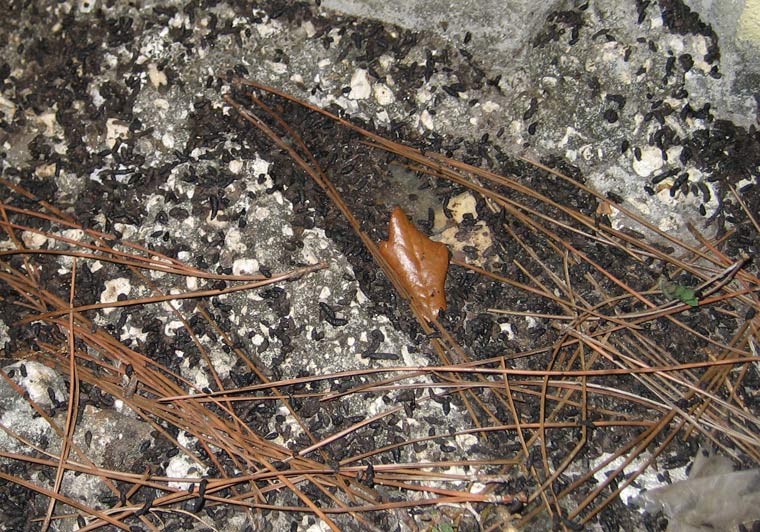- info@wildlife-removal.com
Call us for help in your town
Wildlife Removal Education
4 Steps to Removing Bat Guano the Right Way
Need bat removal in your hometown? We service over 500 USA locations! Click here to hire us in your town and check prices - updated for year 2020.
The thing with bat guano, otherwise known as bat droppings, is that it can actually be quite dangerous. Yes, it's unsightly and smells pretty bad, but that's not the only two concerns you have when you're dealing with wild animal waste and other biological matter. This is the case with ALL wild animals, and not just the humble bat. (Or the many species of them.)

To avoid coming into contact with potentially deadly diseases or parasites, there is a system that you must work through to ensure all biological and waste matter has been removed.
1 – Protect Yourself
More important than anything else; you must make sure that you are protecting yourself and your family at all times when removing bat guano. There are many health concerns, one of the biggest being histoplasmosis.
Make sure all family members are out the way – don't let them in the same areas that you are about to clean up. This applies to both kids and adults, and you'll also want to make sure that no pets are hanging around either. Bats come with a rabies threat, and if your pets haven't been vaccinated, they can fall prey to the virus if bitten. If they are vaccinated, they'll be protected from it … but you won't be. It takes just one bite for a bat or other nuisance animal species to pass along the rabies virus, and bats have such tiny teeth, you might not even realize you have been bitten at all.
A breathing mask is also an important addition to your safety equipment when cleaning up after bats, and this is to ensure that you don't inhale any of the histoplasmosis spores that might become airborne when dry, and also to help protect against other problems, such as mould. Your attic is warm and the bats bring moisture to the party with urine, feces, etc. When the two are combined, you have a dangerous mould situation on your hands – this can affect the respiratory system of everyone in that household and is especially dangerous when left or not noted for a long period of time.
Add some safety spectacles and full coveralls if you have them, and make sure that you're wearing thick gloves too. You won't want to make physical contact with any of the matter you come across, and you certainly don't want to give any of the bats a chance to bite you.
2 – Vacuum, Don't Sweep
As we have already mentioned, one of the disease threats that comes with bat guano, is histoplasmosis. This can easily be sent into the air when dried and swept around or moved by wind, and some experts believe that the spores can then be inhaled; although, this is considered to be quite rare.
This means that you can't sweep the bat guano away, but instead must rely on a filter vacuum to suck up the matter safely.
3 – Lots of Cleaning …
… But don't mix your cleaning products!
You'll want to use all the super strong cleaning products to get rid of any biological material, but you can't mix cleaning products without first reading the instructions; otherwise, you'll run the risk of creating something toxic and potentially dangerous. (As if cleaning up the bat guano and getting rid fo the animals wasn't already dangerous enough.)
A strong biological enzyme cleaner is a good place to start, but you can also look at cleaning products and agents that offer anti-fungal, antibacterial and disinfectant properties. One clean is never enough – go over the area twice, three times if you need to. You MUST make sure that all traces of the bad feces and urine have been removed.
4 – Check, Check & Check Again
Once you think you're done, check one last time. Any matter that HAS been left behind by accident will attract other bats. There's also the risk that any pheromones or biological matter will attract other pests too, including flies, maggots, and perhaps even rats and mice. Of course, that same left-behind matter also has the potential to spread disease – the number one reason why you will want to make sure that you have gotten rid of all traces of it.
Go back to the Bat Removal page, or learn about bats in the attic with my Bats in the Attic guide.


















